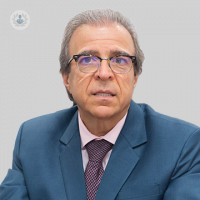Tratamiento integral del queratocono
Written by:What is keratoconus?
Keratoconus is a disease that affects the cornea and causes a poorly progressive and progressive vision in young patients. According to the World Health Organization (WHO), this disease has a very high incidence in the Canary Islands and does not hesitate to define it in epidemic figures.
In the evolution of this disease the cornea adopts an irregular conical shape due to the alteration of its internal structure. The main signs are the thinning of the cornea in its central or paracentral area, ie, the cornea becomes thinner as the disease evolves, and the area is rising causing increasingly poor vision.
This disease can develop in one or both eyes, it is almost always bilateral. The first symptoms usually appear at puberty with the appearance of irregular myopic astigmatism that progressively makes vision difficult.
Treatments
Keratoconus can be corrected with different treatments depending on the stage in which the disease is found:
- In the early stages a good vision can be achieved by correcting it through glasses .
- In a phase of the disease advances , rigid contact lenses should be used to correct irregular astigmatism.
- In some cases, it is appropriate to resort to surgical treatments, such as intracorneal rings to regularize the cornea or corneal cross-linking, a procedure that has proven highly effective in slowing down keratoconus evolution.
- And in the most serious cases, when vision has been significantly reduced, the only solution is keratoplasty corneal transplantation. Currently, the transplant can be performed (in many cases) by selectively replacing the affected layers of the cornea and preserving healthy tissue.

Why is it produced?
The origin of keratoconus is unknown, although in almost a quarter of cases this disease is inherited. In all other cases, it appears sporadically, linked to complex patterns of inheritance that are still being investigated today.
There are also cases involving ocular allergy or continuous rubbing of the eyes.
What are the symptoms?
The main symptom of keratoconus is a decrease in vision and the onset or sudden increase of astigmatism .
Astigmatism is usually induced by a refractive defect of the cornea which, unlike myopia and farsightedness, does not usually evolve naturally with age.
Therefore, it is important that any patient experiencing a sudden increase in this refractive defect, especially in the case of children or young people, should visit an ophthalmologist and perform a complete topographic study to rule out the presence of a keratoconus.
- Very frequent itching of eyes and allergies. It is not advisable to rub your eyes continuously.
- Changes in the prescription or prescription of your glasses very frequent especially in astigmatism.
- Photophobia, glare and halos in the lights.
- Night vision problems.
Prevention
There are no preventive measures against keratoconus, but there are treatments to stop it. Early detection is basic to avoid the very advanced cases, which require corneal transplantation.
It is recommended that direct relatives of patients with keratoconus, although not apparently affected, should undergo visual examination, as they could be carriers of the disease.
The population with the highest risk for this disease are children, adolescents and young people, so it is important to promote eye examinations among these age groups.


